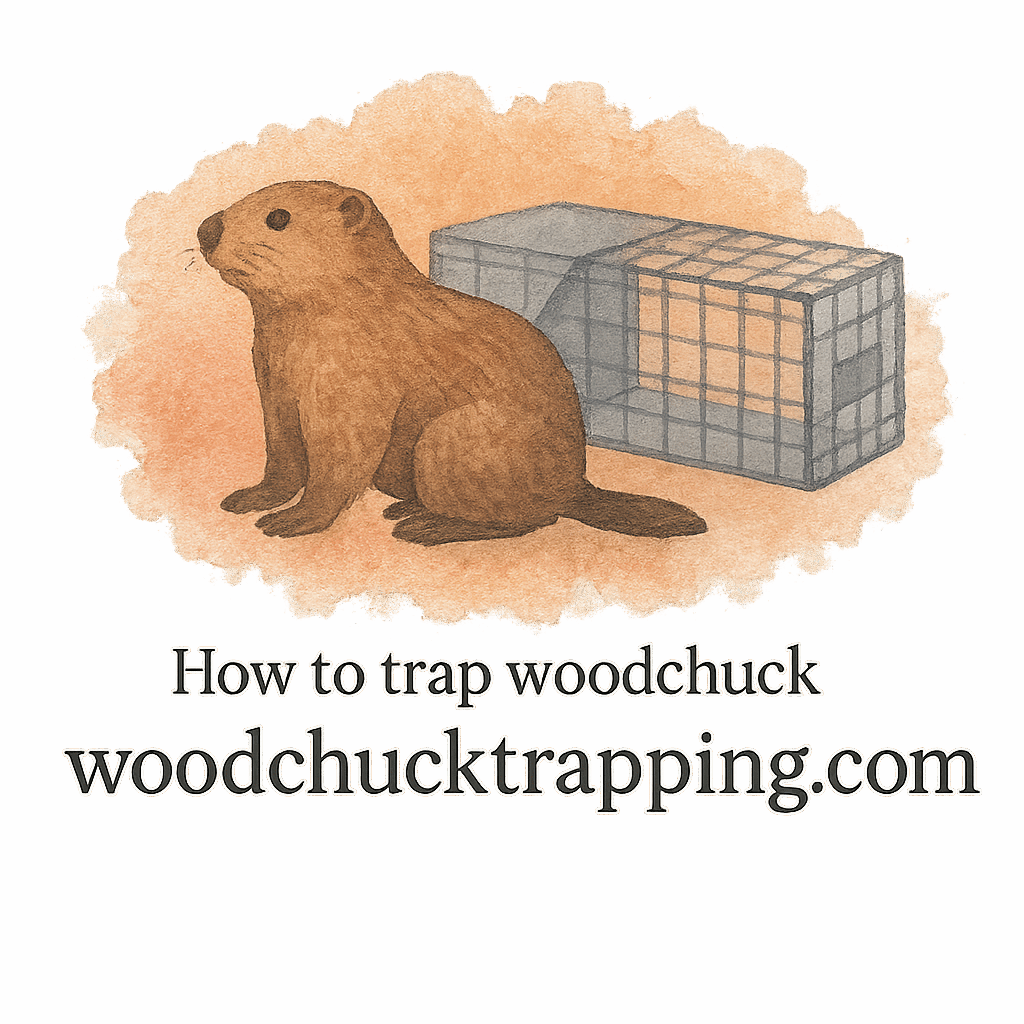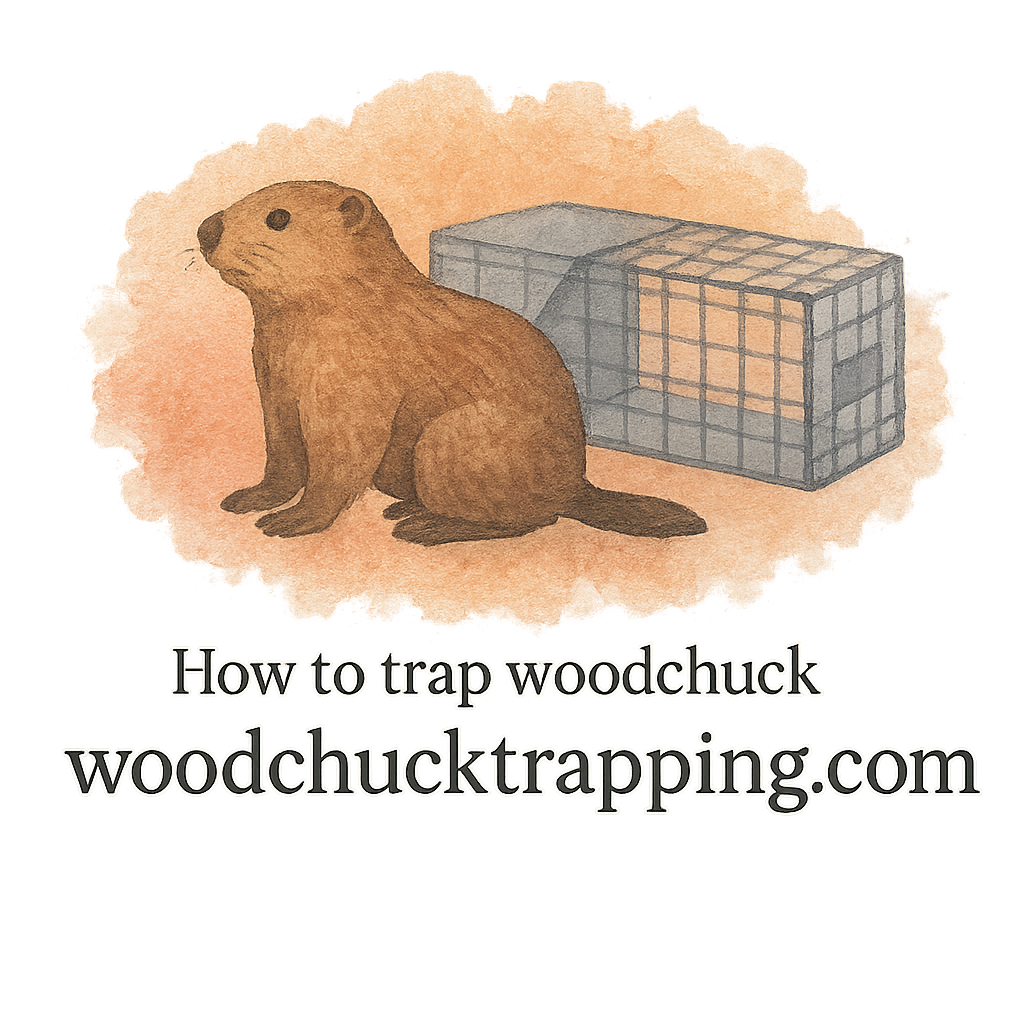Introduction: Why Humane Woodchuck Trapping Matters
When woodchucks (also called groundhogs) invade your yard, they can cause serious damage to gardens, landscaping, and even building foundations. But here’s the thing—these creatures are just doing what comes naturally to them. That’s why humane woodchuck trapping techniques are the best way to handle the problem. They let you protect your property without causing unnecessary harm to the animal.
In this guide, we’ll walk through 10 expert solutions for humane woodchuck trapping techniques, covering everything from equipment to safe handling, prevention, and long-term strategies.
Understanding Woodchuck Behavior
Before you even set a trap, you’ve got to understand your opponent.
Signs of a Woodchuck Infestation
Wondering if you’re dealing with woodchucks? Look for chewed plants, dirt mounds, and wide burrow openings near sheds or gardens. If you see these signs, chances are you’ve got a woodchuck problem.
Common Woodchuck Habits and Burrows
Woodchucks dig burrows with multiple entrances for safety. They’re most active in the early morning and late afternoon. Knowing their habits helps you place traps where they’ll be most effective.
Preparing for Humane Trapping
You don’t just grab a trap and hope for the best. Preparation is key.
Essential Trapping Tools and Equipment
Having the right equipment is the first step toward success.
Compact Traps for Minimal Space
If you’re working in a small yard or tight spots, consider using compact traps. They’re easier to set and manage in minimal space.
Gloves and Safety Gear
Never underestimate the importance of gloves. They protect you from bites and mask your scent when handling traps.
Step 1: Choosing the Right Humane Trap
Trap Size and Placement
A humane trap should be large enough to comfortably contain a woodchuck but not so big that the animal can injure itself while moving around.
Compact vs. Larger Trap Gear
Depending on your situation, you may choose compact gear for tight spaces or trap gear designed for larger yards.
Step 2: Baiting and Luring Techniques
Using Scent Bait Effectively
Woodchucks respond well to scent bait and lure strategies. You can learn more about baiting and luring on our dedicated guide.
Best Food Lures for Woodchucks
Fresh fruits, leafy greens, and even sweet corn are irresistible options. The trick is to make the trap smell like a safe feeding area.

Step 3: Trap Placement Strategies
Near Burrows and Pathways
Placing traps near woodchuck burrow entrances is one of the most effective trapping techniques.
Small Yard and Minimal Space Challenges
If you’re working with a small yard, focus on the spots where you’ve seen the most activity. Strategic placement matters more than quantity.
Step 4: Setting the Trap Safely
Preventing Injury During Setup
Always wear gloves and follow trapping essentials. It’s about protecting both you and the animal.
How to Trap Without Stressing the Animal
Set traps quietly, and avoid placing them in areas with heavy human or pet traffic. Keeping the environment calm reduces stress for the woodchuck.
Step 5: Monitoring Your Trap
Checking Traps Regularly
Humane trapping requires diligence. Check your traps at least twice a day to ensure no animal is left suffering inside.
Avoiding Trapped Animal Stress
Once a trapped animal is caught, act quickly. The less time they spend in the trap, the more humane the process.
Step 6: Handling a Trapped Animal Humanely
Proper Handling Techniques
When handling, use gloves and cover the trap with a cloth to calm the animal.
Transport and Release
Relocate the woodchuck to a safe location, following local laws. This ensures both the animal’s safety and the prevention of future infestation.
Step 7: Following Laws and Safety Guidelines
Local Regulations on Woodchuck Trapping
Always check your state and local laws and safety regulations before trapping. Some areas restrict relocation.
Safety Tips Every Trapper Should Know
From using trap scent correctly to handling traps carefully, safety is non-negotiable.
Step 8: Preventing Future Yard Damage
Blocking Burrows and Entry Points
After removal, block burrow entrances with rocks or fencing. For more strategies, see our yard damage prevention guide.
Humane Yard Protection Solutions
Options like fencing, raised garden beds, and repellents can help you avoid another infestation.
Step 9: Alternative Humane Control Methods
Natural Repellents
Scents like garlic, hot pepper spray, or commercial repellents make your yard less inviting.
Habitat Modification
Reduce access to food sources by securing trash and harvesting gardens regularly.
Step 10: Long-Term Trapping Essentials
Building a Sustainable Strategy
Effective control is not just about trapping once—it’s about creating a long-term plan. Learn about trapping essentials for ongoing success.
Tools and Techniques for Ongoing Prevention
Keep your tools ready, understand new techniques, and stay consistent in monitoring your property.
Conclusion
Humane woodchuck trapping techniques give you the power to protect your yard without harming wildlife. By combining the right equipment, safe handling practices, legal awareness, and prevention strategies, you can solve the problem effectively and ethically.
FAQs
- What’s the most effective bait for woodchucks?
Fresh fruits like apples and cantaloupes are great choices. - Can I trap woodchucks without hurting them?
Yes, with humane traps and careful handling, you can relocate them safely. - How often should I check a trap?
At least twice a day to ensure humane conditions. - Are woodchucks dangerous to humans?
They usually avoid humans but can bite if cornered. Gloves are essential. - Is relocation always legal?
Not always. Check laws and safety regulations in your area. - Can fencing stop woodchucks?
Yes, especially if buried at least a foot underground. - What’s the best long-term solution?
A mix of humane trapping, habitat modification, and damage prevention.


